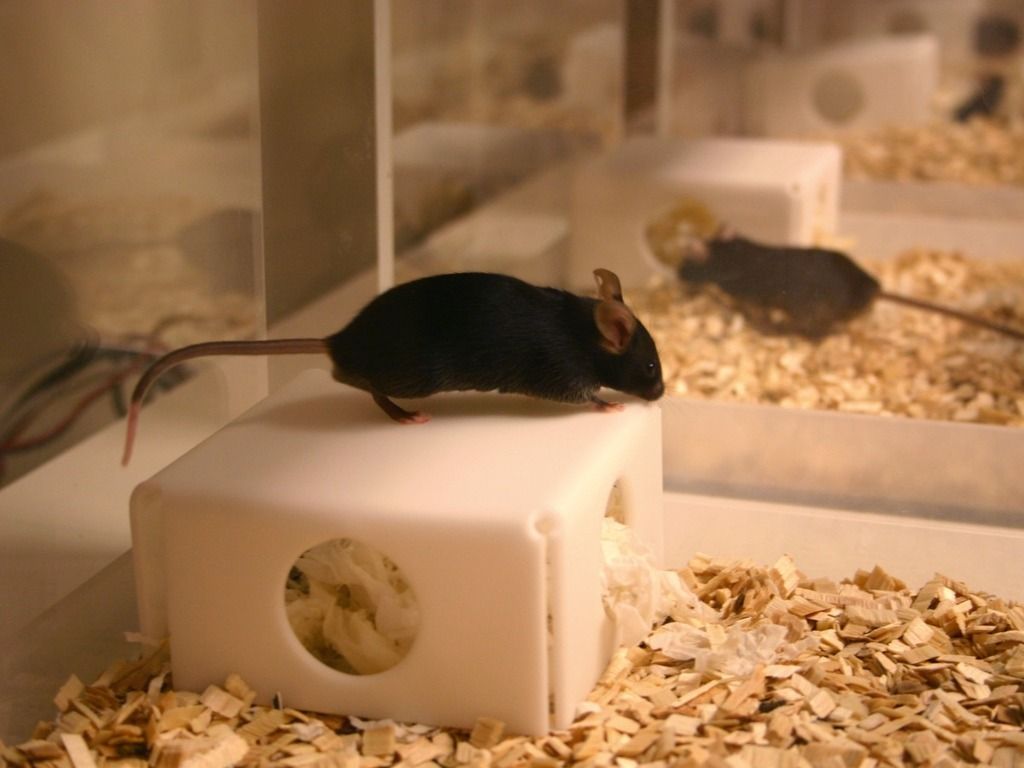Air pollution and brain development, mouse behavior gives insight
Air pollution can have major detrimental effects on health. But, what happens to brain development if a mouse is only exposed in early life. Researchers from the University of Washington studied just that.
Posted by
Published on
Thu 23 Feb. 2023
Topics
| Alzheimer's Disease | Brain Research | EthoVision XT | PhenoTyper | T-maze |

Air pollution carries with it a major health risk for human health. Exposure to polluted air can increase the development of cardiovascular and respiratory diseases. Consequently, the World Health Organization estimates that air pollution contributes annually to 7 million deaths worldwide. Hence, it is important to investigate the effects that different types of air pollution can have on the body.
Air pollution can impact the brain
Previous research on the topic has shown that air pollution can negatively impact the central nervous system. It is important to know how certain polluting substances effect the brain at different life stages, and whether or not these changes persist later in life.
Therefore, researchers from the University of Washington (Seattle, Washington, USA) conducted a study, where they investigated the effect of diesel fume exposure in early life on behavioral and biochemical parameters in mice [1]. They were particularly interested in the effect of diesel fumes on the development of Alzheimer’s disease.
Diesel fumes exposure in early life
Fertilized female mice (wildtype C57BL/6J) were individually housed after breeding. They were exposed to a preset amount of air throughout their pregnancy and postnatally until weaning (day 21 after giving birth). The control group received fresh air, while the treatment group were exposed to diesel fumes (250-300µg/m3, over a period of 6 hours daily). This amount is based on equivalent levels that are reported in highly polluted areas [2].
After exposure, both the treatment and control new born mice were group housed and kept for 22 months in fresh air conditions. Interestingly, Garrick et al. found that exposure to diesel fumes affected the birth outcomes. Of the pregnant mice, the group that was exposed to diesel fumes had significantly lower birth rates (54.2% for diesel fumes vs 82.1% for control).
Furthermore, the survival of the newborns was also lower for the group exposed to diesel fumes (80.9% for diesel fumes vs 93.4% for control).
Home-cage testing using PhenoTyper
Alzheimer’s is often categorized by a loss in cognitive functioning. Therefore, the behavior of the mice was tested at adult and aged life stages with various tests. The first of the behavioral tests was a home-cage test. Using the PhenoTyper from Noldus, Garrick et al. were able to observe the mice in the same environment for a long duration.
They used EthoVision XT in combination with their PhenoTyper to track the movement of the mice during the day and night period. The researchers used EthoVision XT to divide the PhenoTyper into distinct areas during data acquisition. These areas were used to determine the time spend at certain regions of the PhenoTyper as well as overall activity.
Interestingly, male mice that were exposed to diesel fumes spent less time at the feeding station and spent less time moving around during the light cycle. This difference was not observed in females. Furthermore, even though this behavioral change didn’t persist into later life, a weight reduction was observed for these treatment males.
How diesel fumes affect cognitive abilities
As previously mentioned, there are strong indications that air pollution can affect the central nervous system. To see if the diesel fume exposure has an effect on cognitive abilities the mice were observed in a T-maze and with the object recognition test.
The T-maze and spatial memory
The T-maze is used as a measure for exploratory behavior and spatial memory. The object recognition test also measures spatial memory, but more specifically object location memory. The T-maze reflects the function of the dorsal hippocampus, basal fore-brain and prefrontal cortex. On the other hand, the object recognition test engages primarily the dorsal hippocampus.
Even though, both experiments test spatial memory the results did differ between the experiments. Aged mice that were exposed to diesel fumes had a modest reduction in spontaneous alternations in the T-maze, but no significant effect of diesel fumes was found in relation to object recognition.
This could mean that the effect of the particle matter in diesel fumes is specific to certain brain areas. It could be assumed that the hippocampal memory is not affected by perinatal diesel fume exposure. Instead the exposure to the fumes may cause deficits in the basal fore-brain and prefrontal cortex.
Biochemical effect of diesel fumes
Naturally, it is also important to look at what is happening inside the body. Garrick et al. measured malondialdehyde levels in the cerebral cortex and the hippocampus as an indicator for lipid peroxidation. The results show that aged mice that were prenatally exposed to diesel fumes were experiencing oxidative stress at an aged stage.
This was not what the researchers expected, since most harmful particles that would cause oxidative stress do not persist in the brain over time. However, it seems possible that some particles do continue to stay in the brain.
It would be interesting to perform an analysis on the brain to see if these particles truly stay inside the brain for an extended period of time. If these particles remain in the brain for longer periods of time it could give insight to the health risk of early life diesel fume exposure.

Do these results translate to humans?
Garrick et al. set up this experiment to see whether or not diesel fume exposure in early life could be related to Alzheimer’s disease. When looking at classical biochemical pathologies for Alzheimer’s (tau neurofibrillary tangles and amyloid beta plaques), they didn’t find any differences between control and diesel fume exposed mice. However, Garrick et al. do recognize that the mouse model used in this particular study is not ideal to show Alzheimer’s Disease.
What Garrick et al. do conclude, is that early life diesel fume exposure could permanently alter neural pathways and the oxidative stress response. Thus, a decrease in worldwide emissions would reduce health risks for exposed children at a later age. However, the researchers say that early life diesel fume exposure alone would not lead to Alzheimer’s disease later in life.
Using mouse models
Of course, directly translating these results to humans is more complicated. However, using these mouse models does give valuable insight in the biological functioning in relation to external stimuli. PhenoTyper enables long term, repeatable and easy measurements. This enables researchers to get the full picture of the behaviors an animal performs, in a less stressful home-cage environment.
References
[1] Garrick, J.M. et al. (2023) ‘Perinatal diesel exhaust exposure causes persistent changes in the brains of aged mice: An assessment of behavioral and biochemical endpoints related to neurodegenerative disease’, Environmental Toxicology.
[2] Wang, J.-F. et al. (2013) ‘Estimation of Citywide Air Pollution in Beijing’, PLOS ONE, 8(1), p. e53400. https://doi.org/10.1371/journal.pone.0053400.
Related Posts

5 proven ways to measure spatial learning in rodents

Does infection cause memory loss?


